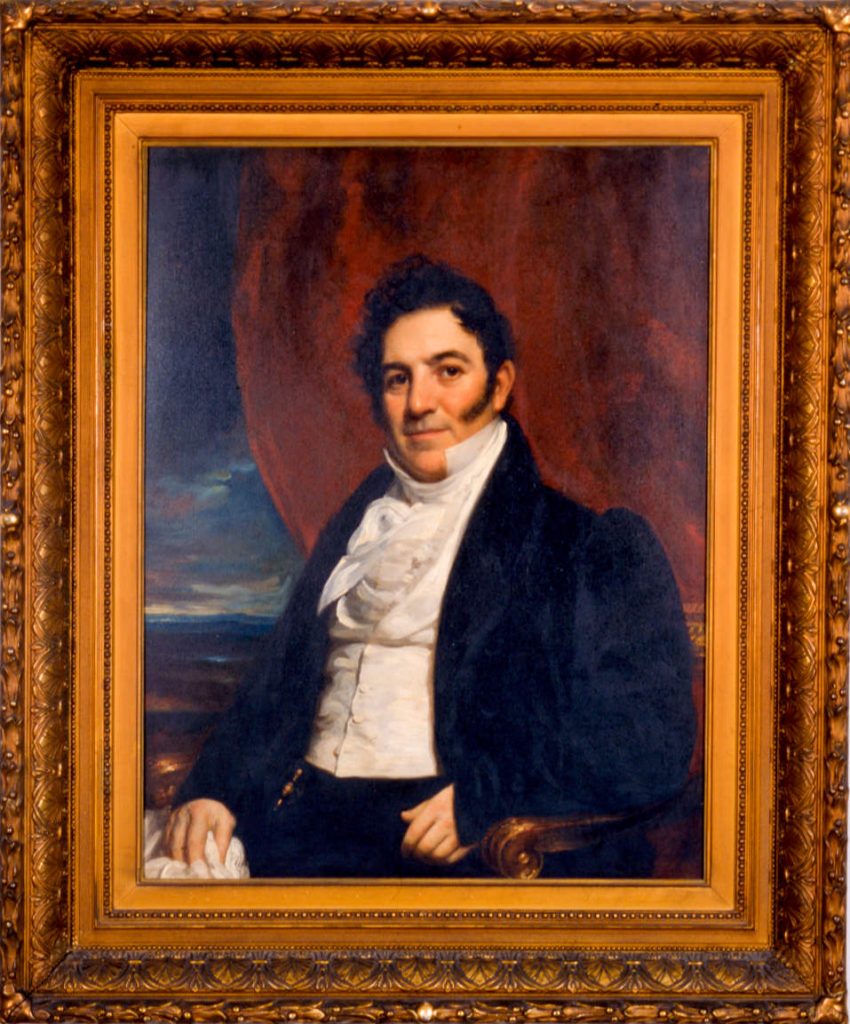The Hendricks family story is intimately tied to the rise of American industry. Within that narrative, Harmon holds a place of prominence as the dynamic and visionary figure who managed to transform his father’s simple business in the metals trade into a diversified company engaged in both the manufacture and brokerage of industrial grade copper.
Born in New York, Harmon was the sixth of ten children and second son born to Eve Esther Gomez and Uriah Hendricks, an immigrant merchant shopkeeper from Amsterdam. A few years before Harmon’s birth, Uriah Hendricks left off trading in dry goods in preference for the import and export of metalwares, particularly iron and copper goods manufactured in England. Uriah soon established himself as a specialist in these metals. An adherent to the principles of strict religious observance, Uriah ensured that his sons received a proper religious education at Shearith Israel. Upon his father’s death in 1798, Harmon, as the sole surviving son, took on responsibility not just for the business but for his stepmother and two unmarried sisters, one of whom was mentally unstable.
Harmon began working for his father as a clerk at age fourteen, writing and tracking correspondence and learning to keep exact accounts. After six years of work under his father’s close supervision, twenty-year-old Harmon embarked on a year-long tour of the states and the Caribbean in order to familiarize himself with market conditions in these locations. By 1792, when he turned 21, Harmon Hendricks could claim a thorough understanding of the conditions of maritime commerce. Over the years, he arrived at a vision for the future of the metals trade that he began to put in place after his father’s death. In short order, he gave up the West Indies side of his father’s business, sold off his father’s inventory of manufactured metal wares and other goods, and focused on the import trade in hardware and industrial grade metals. Among the business contacts and frequent collaborators Hendricks maintained during his career was Paul Revere, who had set up the first copper rolling mill at Canton, Massachusetts, in 1802. Another significant contact was Robert Fulton, inventor of the steamboat, who bought copper from Hendricks for use in fashioning his steam boilers.
When war broke out with Britain in 1812, British authorities prevented the shipment of metals for which Hendricks had already contracted and he found his own business hampered. Turning his mind to the problem of supply, he then determined to purchase the vacant Soho copper refinery in Belleville, New Jersey for the purpose of manufacturing copper himself. The success of this factory, which Hendricks set up with his brother-in-law Solomon Isaacs as joint partner, carried the family’s fortunes for three generations over the course of more than a century. The Soho Copper Works, as Hendricks named it, played an important role in national defense, supplying copper sheathing for U. S. Navy vessels, including the U.S.S. Constitution (nicknamed “Old Ironsides,” and still on commission in Boston Harbor). Soho also supplied copper sheathing and casting work for civilian shipping, in particular the steamboats constructed by Fulton and his followers.
Harmon Hendricks maintained a deep commitment to his religious faith throughout his life, spreading the beneficence of his success in business through acts of philanthropy to the Jewish community and the community at large. In 1800 Hendricks, then 29, had married 17 year old Frances Isaacs, daughter of Justina Brandly Lazarus and Joshua Isaacs. Harmon and Frances had thirteen children, whom Harmon educated in their religious faith and responsibilities, including his daughters as well as his sons. He retired from business in favor of his sons Uriah and Henry at the age of 60, leaving and thereafter devoted his time to charitable and communal work until his death eight years later.
